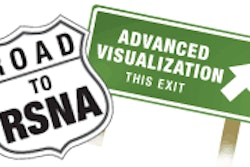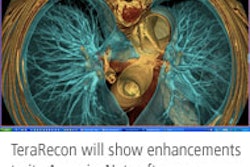The goal of orthodontic imaging is to represent reality as closely as possible, and increasingly, technology is making the job easier. As 2D imaging gives way to more sophisticated 3D methods, orthodontists can rest assured that they are capturing patients and their treatment needs more accurately.
"The goal of imaging is to represent the anatomic truth," said Dr. William Harrell Jr., in a presentation at the 2005 American Association of Orthodontists (AAO) meeting in San Francisco. "(Three-dimensional imaging) is really starting to come into its own. How do we use this as orthodontists? The current emphasis is on facial aesthetics in treatment planning so we're trying to tie the face with the teeth with the bones."
Harrell is in private practice in Alexander City, AL. He also serves on the AAO's Council on Information Technology, and is the AAO representative for the American Dental Association's (ADA) Standards Committee on Dental Informatics.
Currently, most orthodontists rely on 2D techniques for treatment planning and modeling. While that's a certainly a major advancement from working solely with full-face plaster masks and molds, the method is still lacking, Harrell said.
He pointed out some of the major problems with 2D. Using a "patchwork quilt method," in which multiple 2D images are viewed as separate components, doesn't offer any connection to facial structure, he said. In addition, "any kind of head positioning errors can affect the way our cephalometrics are presented," he explained.
Harrell and his colleagues conducted a study pitting conventional 2D measurements to 3D ones. They found that the former technique, which is essentially the gold standard, resulted in a cephalometric measurement underestimation of 17.65 mm and overestimation of 15.52 mm. In comparison, 3D measurements turned in underestimation of 3.99 mm and overestimation of 2.96 mm.
"In our experiment, 3D was four to five times more precise than the gold standard. This study suggests that there is the possibility to evaluate real changes in growth and development (with 3D)," he said.
Another advantage of 3D software is what Harrell called "smart digital models." These virtual models allow orthodontists to visualize treatment options to correct crowding of the teeth or to judge teeth proportionality. This information can then be used to illustrate to the patient the aesthetic implications of the procedure, he said.
Harrell said he is now working on combining 3D with conebeam CT for orthodontics to achieve an even greater anatomic truth. He also said he hopes more advanced technology will see orthodontists working with other medical specialists to collaboratively treat head, neck, and facial disorders such as with jaw function or sleep apnea.
Finally, Harrell urged AAO attendees, as well as anyone interested in advanced dental visualization, to join the ADA informatics committee. Formed in March 2005, the group is in the process of developing digital standards and the orthodontic components of electronic health records.
By Shalmali Pal
AuntMinnie.com staff writer
June 2, 2005
Related Reading
Orthodontist advises practice needs assessment before investing in DR, May 25, 2005
MDCT advances oral and maxillofacial surgery practice, November 22, 2004
MRI clicks with TMJ diagnosis and treatment, October 15, 2004
Copyright © 2005 AuntMinnie.com



















